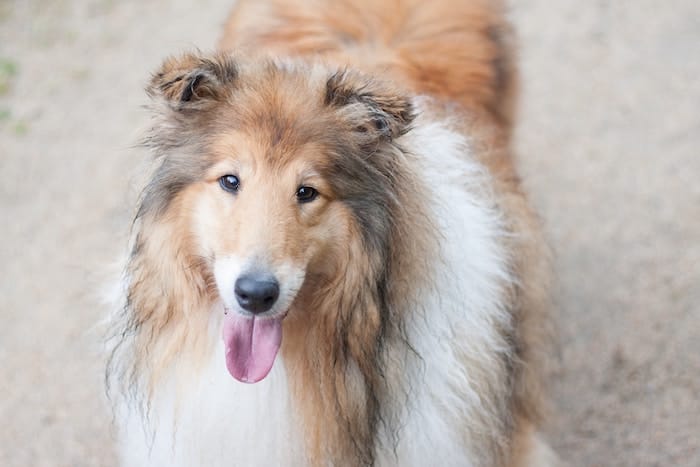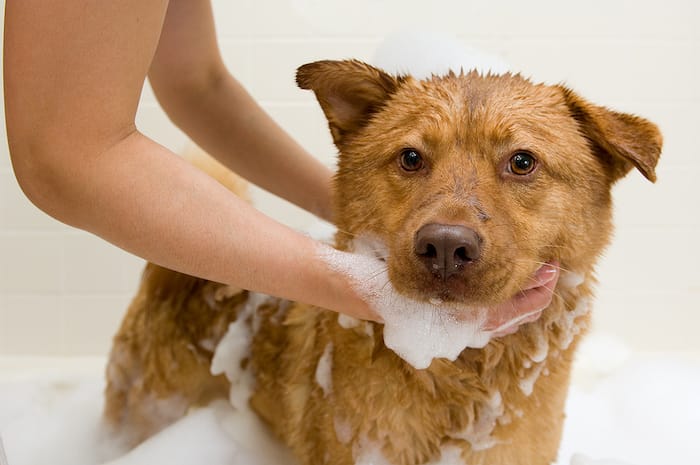Are you wondering if your dog is having an unhealthy coat? Want to learn how to check on your pup’s coat to ensure they’re doing well?
Every dog lover wants their canine companion to be healthy and safe. A healthy coat is a sign that your animal is well-nourished, clean, and generally happy.
If you have a dog and have noticed that their coat has changed, this guide will give you some warning signs so you can take action. The better you care for your pup, the healthier your dog coat will be.
Follow along to learn the top five signs of unhealthy dog coat. Seek the counsel of a professional dog groomer if you’re concerned.

- Dull and Lifeless Fur
One of the most visible signs is a dull dog coat and lifeless fur. Instead of a shiny, vibrant coat, your dog’s fur may appear lackluster, flat, and even slightly rough. Various factors, including poor nutrition, inadequate grooming, or underlying health issues, can cause this.
You can make some simple changes to help bring back the luster in your pup’s coat.
Start by ensuring your dog’s diet is well-balanced with high-quality dog food. Proper nutrition is the foundation for healthy fur, and a diet rich in essential nutrients, such as proteins, vitamins, and minerals, is crucial.
Additionally, consider incorporating supplements like vital pet life salmon oil, packed with omega-3 fatty acids that promote skin and coat health. These healthy fats can transform dull fur into a shiny, soft coat over time.
- Excessive Shedding
While shedding is a common part of a dog’s life, excessive shedding can be a red flag for an unhealthy coat. If you notice unusual fur around your home, on your clothes, or when petting your dog, it’s time to investigate. Excessive shedding can result from various factors, including poor diet, allergies, stress, or underlying health issues like parasites or hormonal imbalances.
To address excessive shedding, consult your veterinarian to rule out any underlying health problems. They can perform tests and offer guidance on potential treatments.
Meanwhile, you can take steps at home to help reduce shedding. A well-balanced diet and regular grooming are crucial, as we mentioned earlier.
Besides, consider using a high-quality shedding control dog shampoo. This can help minimize shedding by strengthening the hair follicles and nourishing the skin.
- Dry and Flaky Skin
Imagine your skin feeling parched, like a desert without an oasis. It’s not a pleasant thought, right?
Well, your dog’s skin feels the same way when it’s dry and flaky. Dry dog hair can result from various factors, including harsh weather conditions, improper grooming, or even dietary deficiencies.
One significant factor is bathing your dog too frequently. Bathing removes the natural oils that keep your dog’s skin hydrated. If you wash your pup too often, their skin can become dry and flaky, leading to discomfort and a dull and unhealthy coat.
Diet plays a vital role in your dog’s skin health. A lack of essential fatty acids, vitamins, and minerals can contribute to dry skin issues. Ensuring your dog’s diet is well-balanced and provides the necessary nutrients is key to maintaining a vibrant coat.
How to address it? Limit your dog’s baths to when necessary. If they have dry skin, opt for a moisturizing dog shampoo.
Feeding a high-quality dog food that contains necessary nutrients, especially omega-3 fatty acids, can work wonders for their skin.
Consult with your vet for dietary recommendations if you’re unsure. Regular brushing can also help distribute natural oils and remove flaky skin.
- Bald Patches
Another red flag for an unhealthy dog coat is the presence of bald patches. When your dog’s fur starts thinning out in certain areas, it can be a cause for concern. Various factors, including allergies, skin infections, or excessive licking and scratching, can cause bald patches.
Identifying the cause of bald patches is essential to finding the right solution. If it’s due to allergies, your vet might recommend dietary changes or prescribe medication to alleviate symptoms. Keep an eye out for irritants in your dog’s environment, like certain plants or chemicals, and try to minimize their exposure.
If it’s a skin infection, consult your vet for appropriate treatment. If the bald patches result from excessive licking or scratching, consider using a cone collar to prevent further self-inflicted damage. Always consult with a professional for a proper diagnosis and treatment plan.
- Itchy or Irritated Skin
Imagine feeling an incessant itch all over your body – it would be pretty annoying, right? Dogs feel the same way when their skin is itchy and irritated.
Another sign that something’s off with your pup’s coat is when they can’t stop scratching, biting, or licking themselves. If your dog constantly goes at it, it might be a sign of skin issues.
So, why is your dog’s skin so itchy and irritated? Several factors can be at play.
Allergies, whether food-related or environmental, are common culprits. Fleas and ticks are another big troublemaker, causing irritation and itching.
Skin infections, like fungal or bacterial issues, can also make your dog’s skin go haywire. Even dry, flaky skin can cause itching and discomfort.
What can you do? To address itchy and irritated skin, you should consult your vet. They can identify the underlying cause and recommend the right treatment.
You might need to adjust your dog’s diet, use medicated shampoos, or apply prescribed medications.

Beware of These Signs of Unhealthy Dog Coat
In conclusion, it is essential to pay attention to your dog’s coat as it can be a strong indicator of their overall health. Look out for the five warning signs of unhealthy dog coat, and if you notice any, seek veterinary care immediately. Don’t wait until it’s too late; take action and ensure your fur baby has a happy and healthy coat.
Remember, a healthy coat equals a healthy dog. Don’t ignore the signs; take care of your furry friend today.
Did you like this article? If so, we have loads of other informative content to share. Browse more of our latest blog posts!
